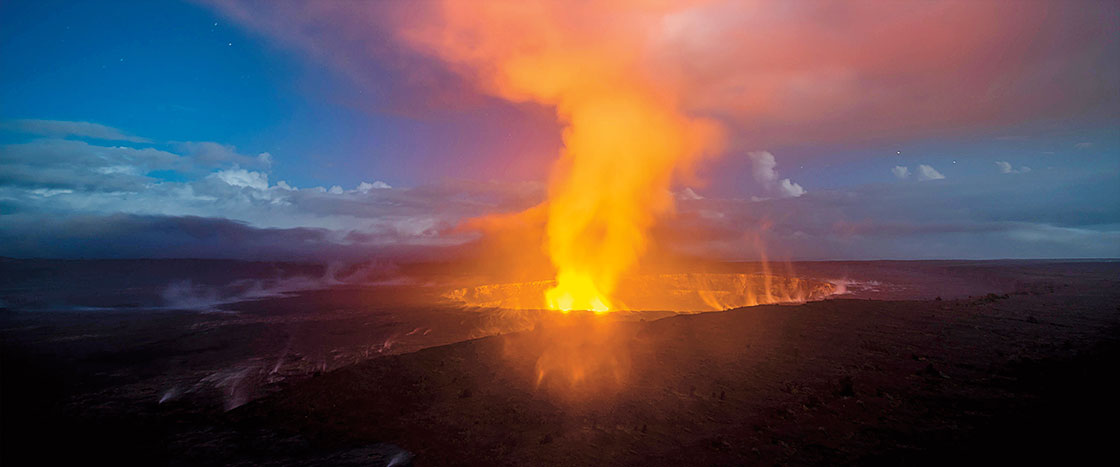Kilauea is not the kind of volcano you usually see in disaster movies: the steep-sided mountains, known as stratovolcanoes, that blow their tops with explosive fury, releasing fast-moving flows of superhot gases and ash. Throughout history, stratovolcanoes have unleashed enormous death and destruction. There’s Mount Vesuvius, in Italy, which erupted 1,500 years ago. It killed thousands and buried the city of Pompeii under 20 feet of ash and rock. Then there’s Krakatau, in Indonesia, which erupted in 1893 with a crack heard 3,000 miles away. Closer to home, there’s Mount St. Helens, in Washington State, which killed 57 people when it erupted in 1980.
Kilauea—like the other volcanoes in Hawaii—is not a stratovolcano. Kilauea is a shield volcano. Shield volcanoes look less like towering mountains and more like humps rising from the ground. They aren’t as likely as stratovolcanoes to erupt with sudden violence; rather, they often ooze gentle flows of lava and emit gases, sometimes spurting lava upward in lazy fountains.
Kilauea has been oozing and spurting almost constantly since 1983 but was considered safe as long as people kept away from danger zones. In fact, millions of tourists have traveled to the Big Island just to see Kilauea’s fiery sprays and lava flows.
In recent decades, several neighborhoods have been built on Kilauea, including the one where Josh lives. After he and his family moved to Hawaii from Louisiana four years ago, Josh fell in love with the beauty of the island—the turquoise ocean water, the vibrant flowers, the blue sky. And Kilauea! A volcano, right in his backyard!
Josh was not afraid of Kilauea. On the contrary, he treasured Kilauea as a favorite spot for family hikes and school trips. He felt fortunate to be able to hike to the volcano’s summit and peer inside—to watch in amazement as lava streams plunged off cliffs and into the ocean.
But as Josh soon witnessed, shield volcanoes can be explosive.


